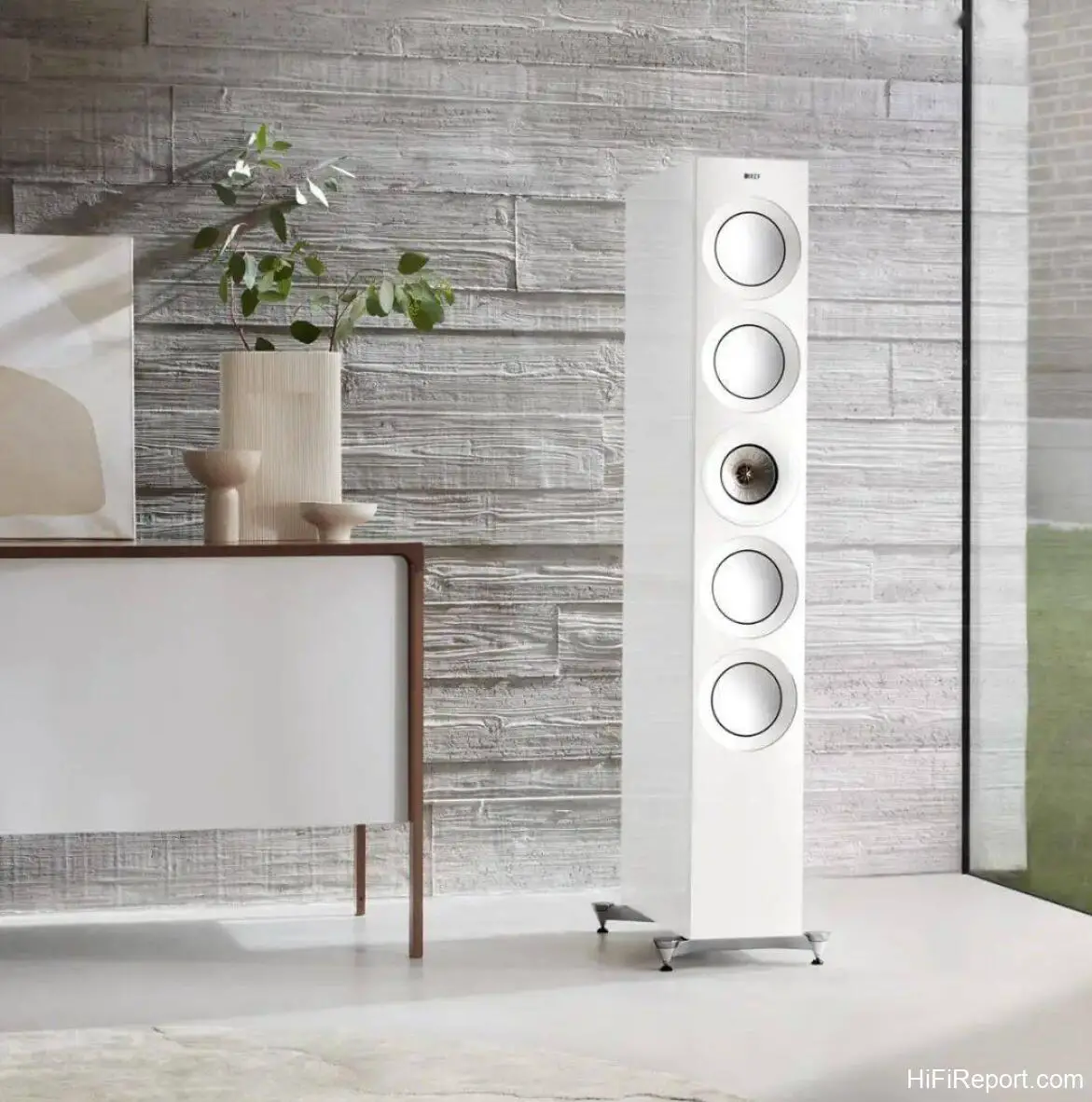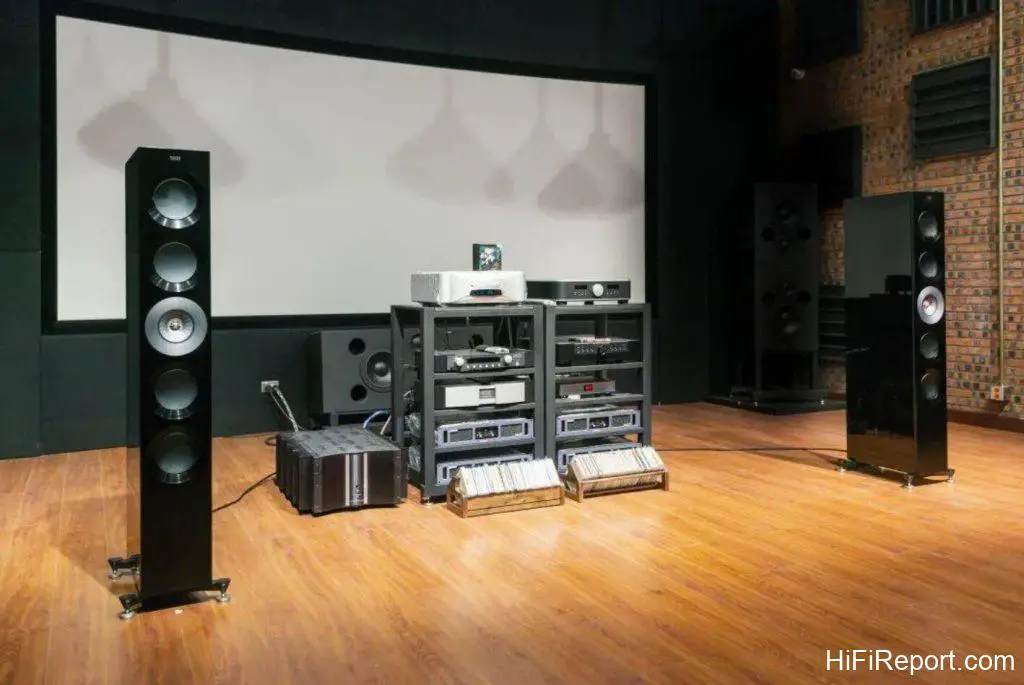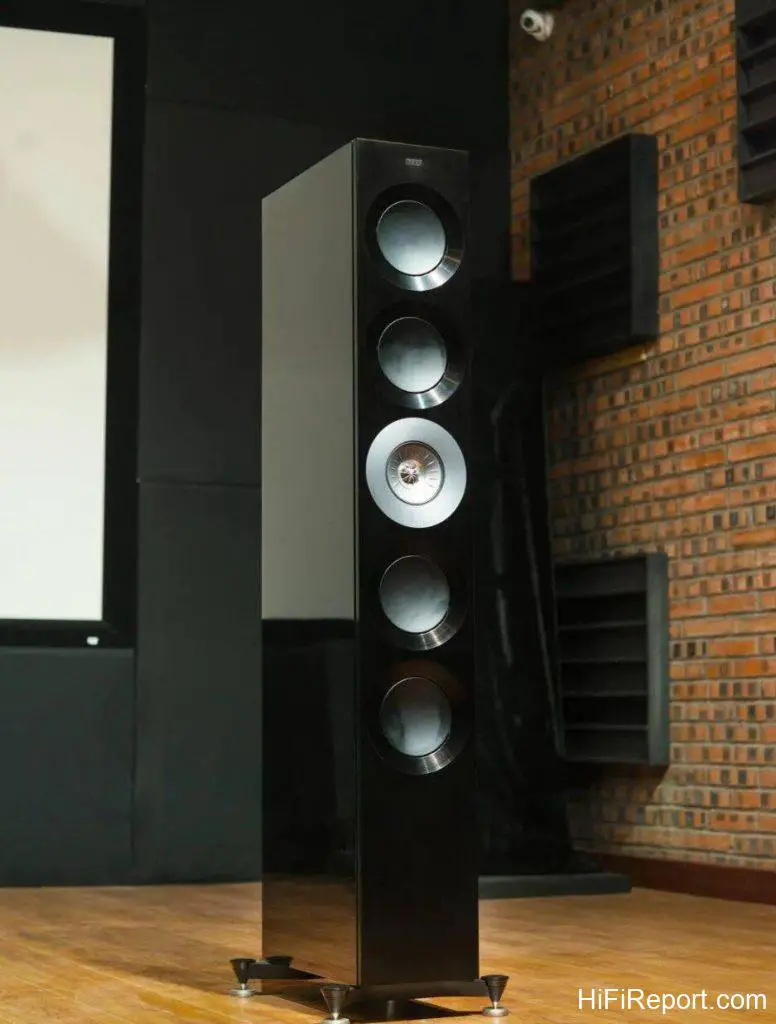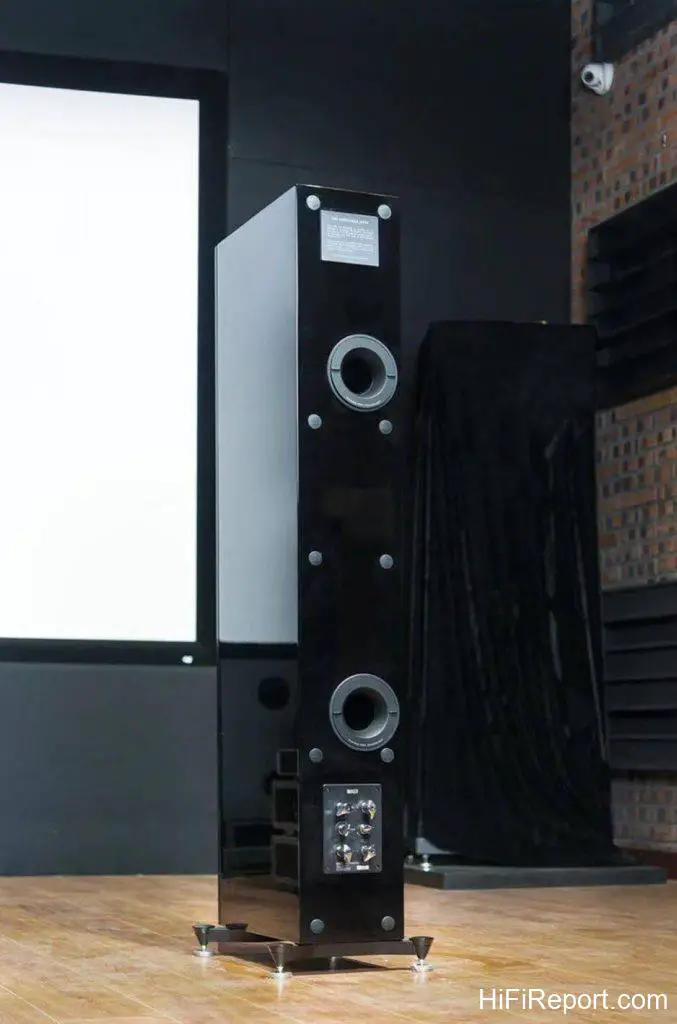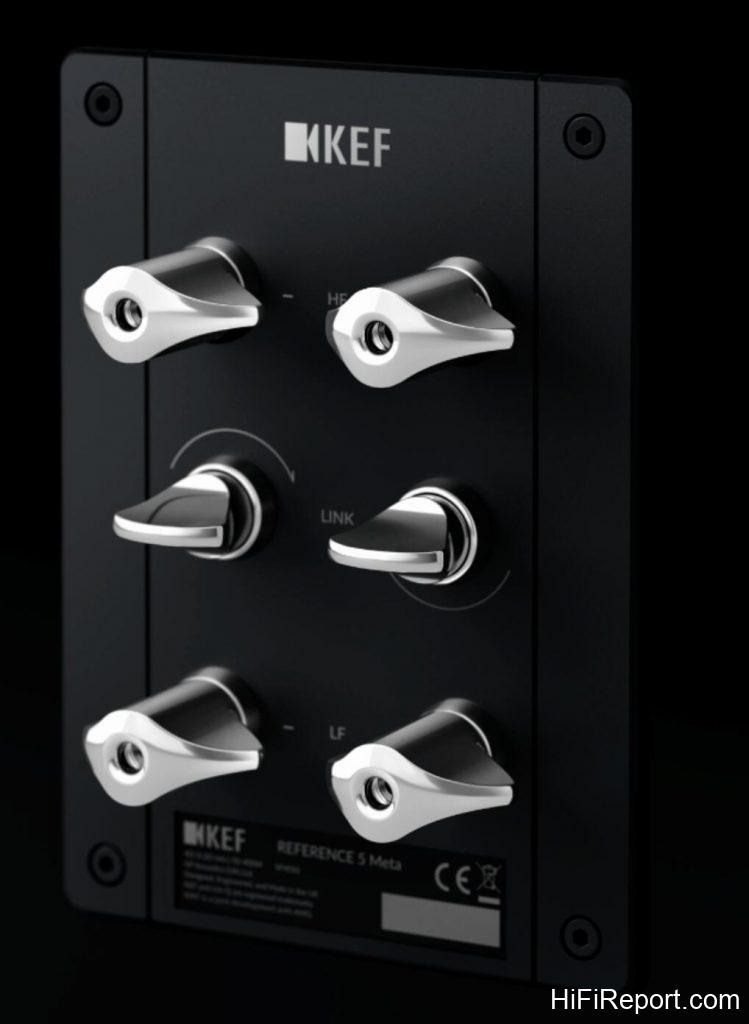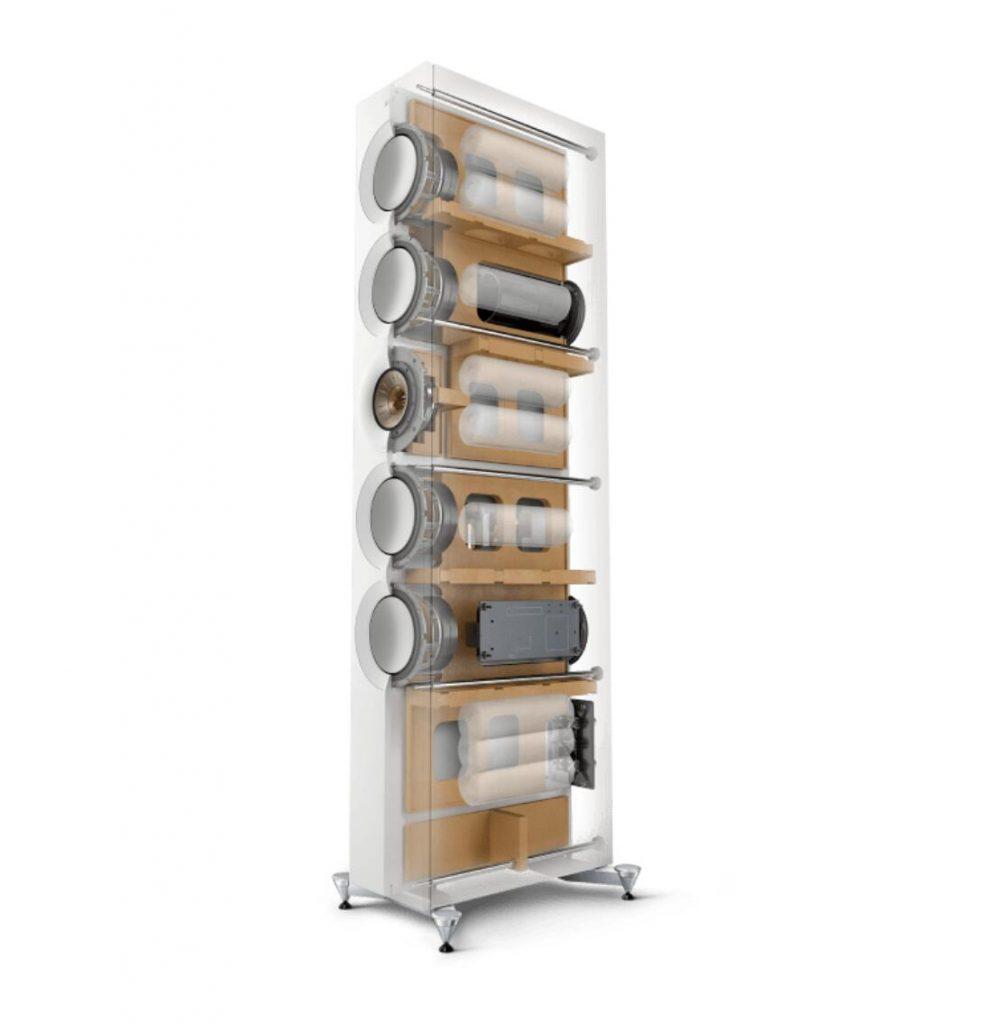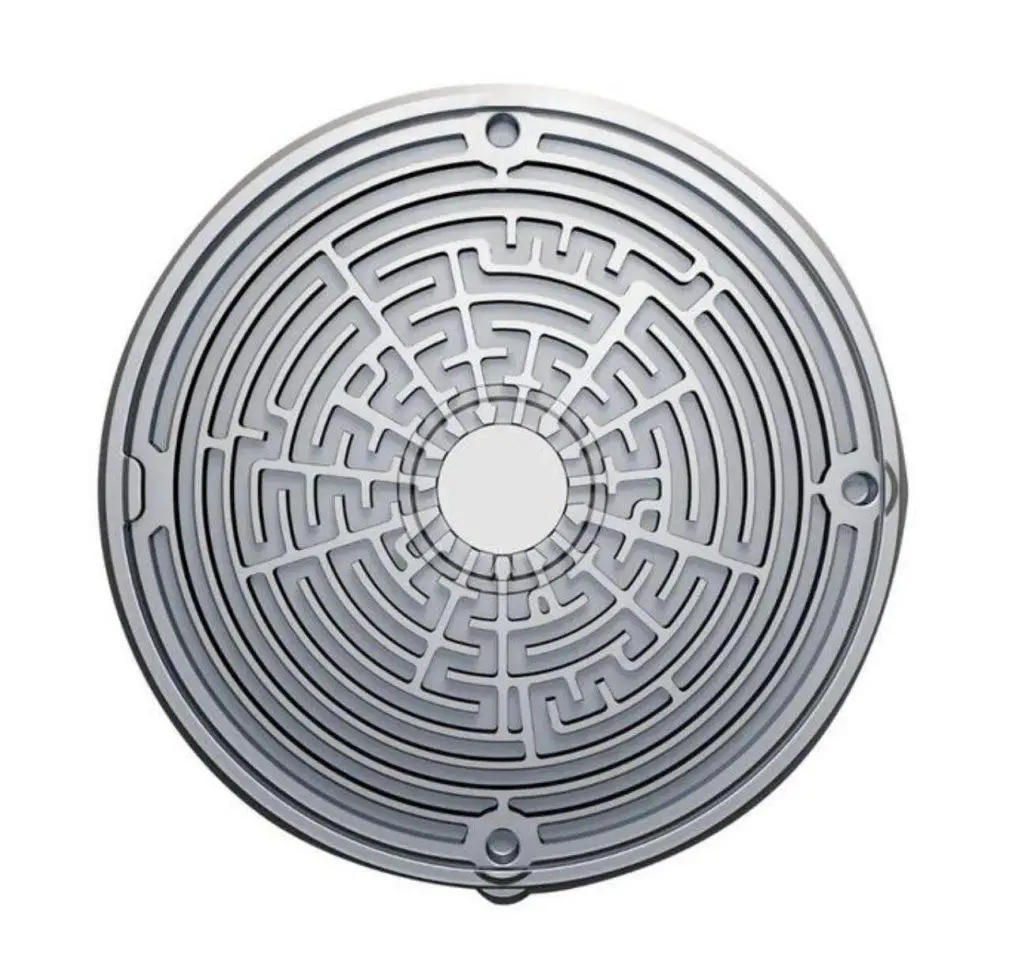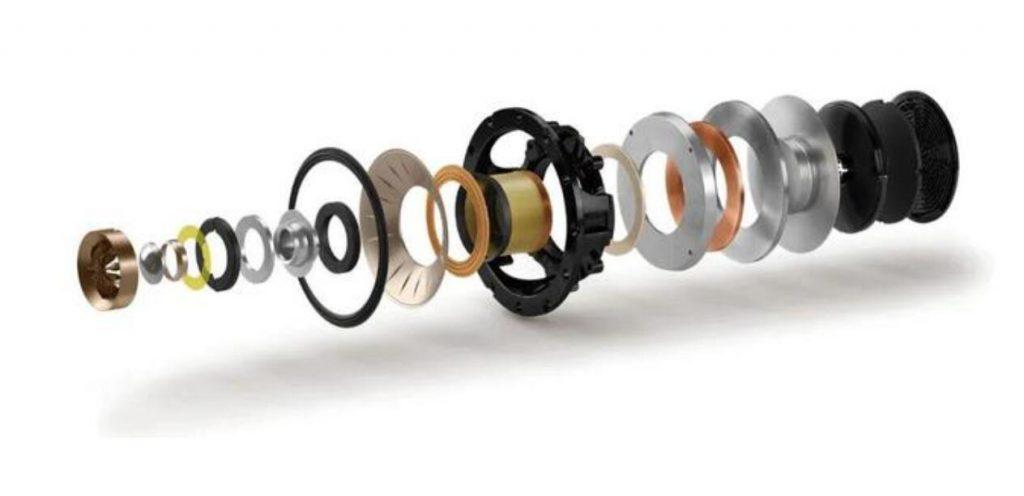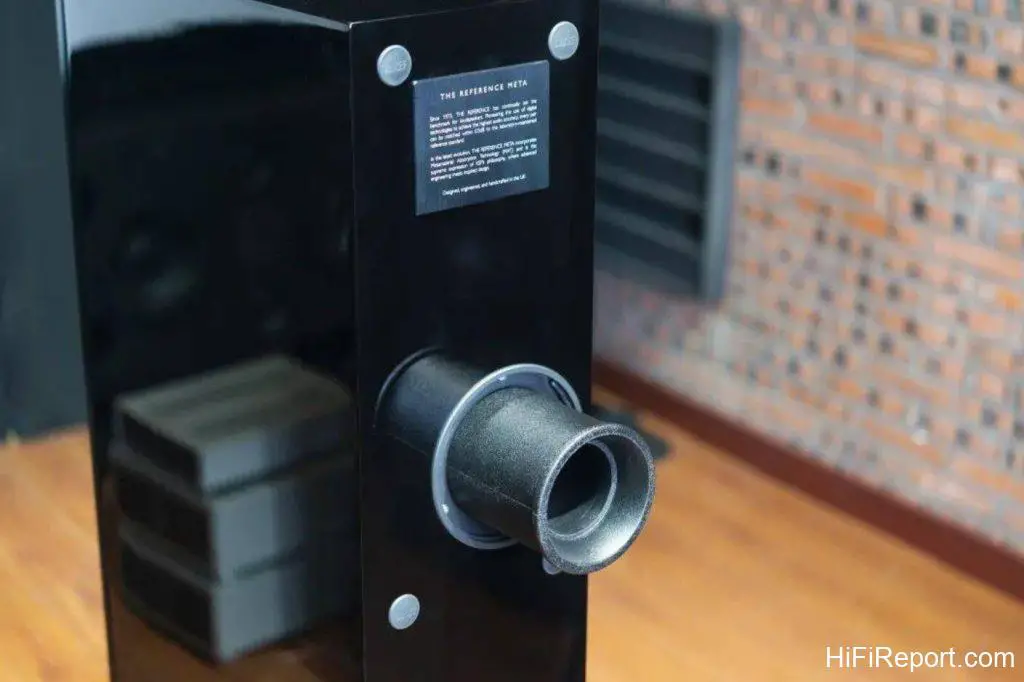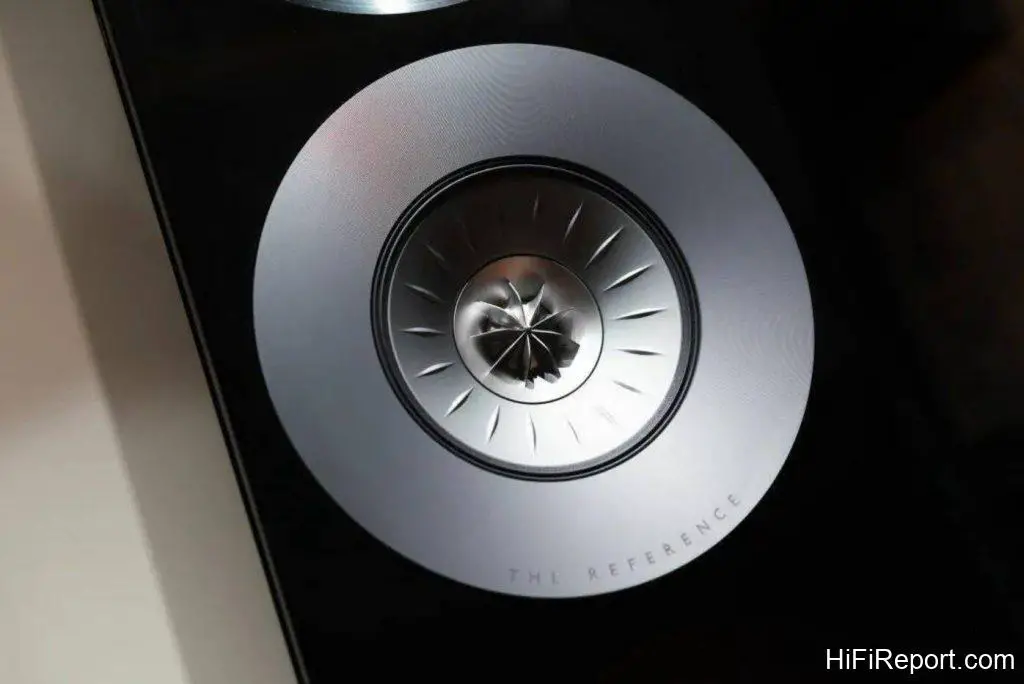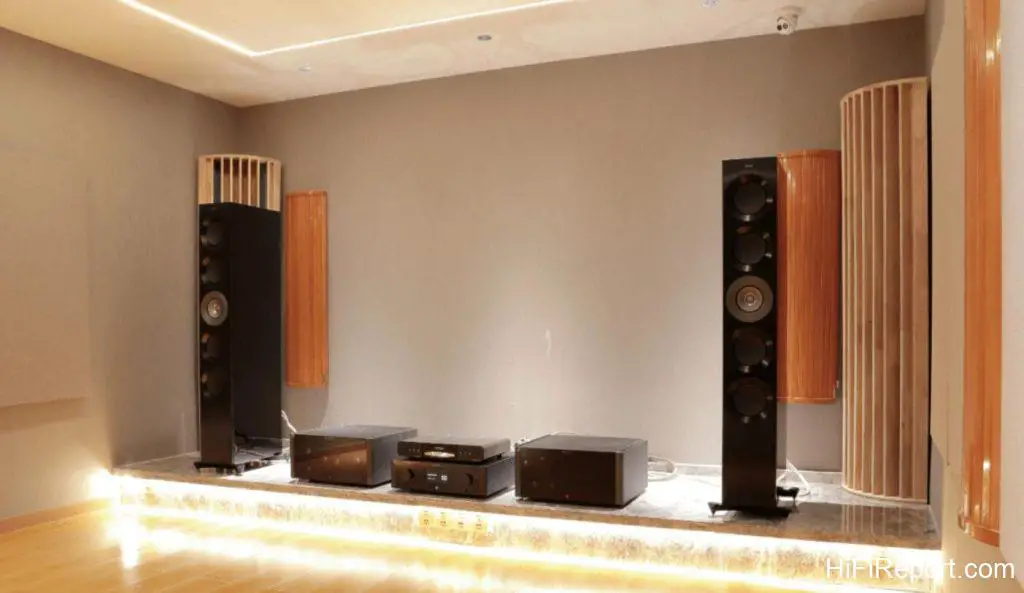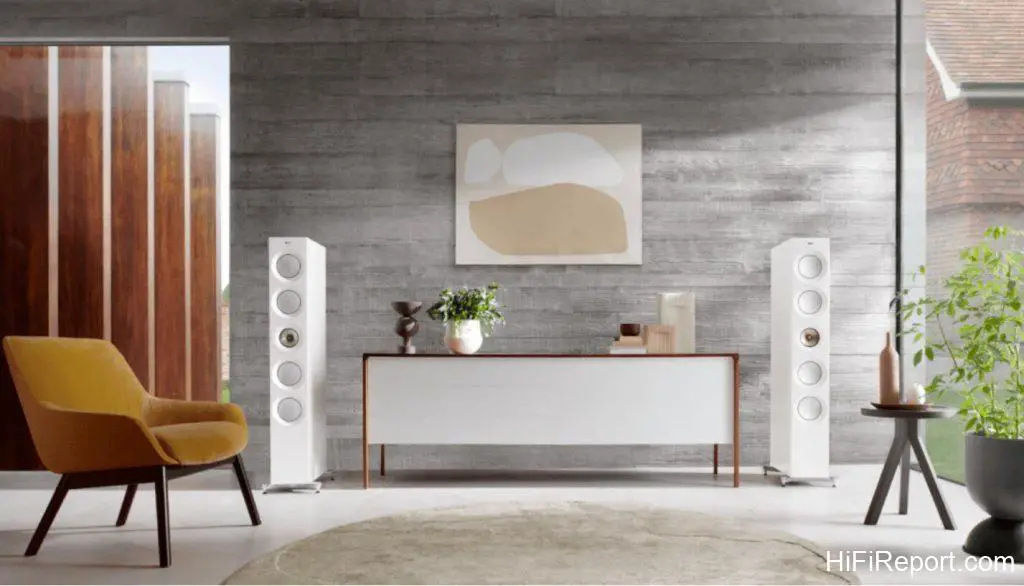KEF REFERENCE 5 Meta Review
The highlight of the all-new KEF Reference series lies in incorporating the 12th-generation Uni-Q technology featuring MAT (Metamaterial Absorption Technology). MAT is utilized on the backside of the Uni-Q driver to absorb detrimental sound waves, optimizing high-frequency performance.
Initially introduced in the popular LS50 Meta and LS50 Wireless II bookshelf speakers, the 12th generation Uni-Q technology with MAT has undergone refined enhancements. It is now employed again in the entirely new Blade One Meta, Blade Two Meta, and the Reference Meta series under review.
It’s important to note that while all these series utilize KEF’s latest 12th generation Uni-Q technology, the higher-tier positioning of the Blade One Meta, Blade Two Meta, and Reference Meta series signifies a “Hi-End level,” characterized by more meticulous construction and materials.
The all-new Reference series comprises a total of eight models, including the floor-standing speakers Reference 5 Meta and Reference 3 Meta, the bookshelf speaker Reference 1 Meta, the center speakers Reference 4 Meta and Reference 2 Meta, a 9-inch dual-driver subwoofer Reference 8b, along with two flagship embedded speakers, Ci5160REF-THX and Ci3160REF-THX, both boasting THX Ultra certification. It’s worth noting that the two embedded speakers do not currently incorporate MAT technology.
This diverse lineup allows the series to cater to high-quality two-channel Hi-Fi and multi-channel home theater audio systems, offering users many configuration choices. For audiophiles seeking two-channel systems, both the Reference 5 Meta and Reference 3 Meta are highly recommended, with the latter only differing by two fewer bass units, making it suitable for slightly smaller listening spaces and providing greater compatibility with amplifier pairings.
Design
The KEF Reference series continues to be handcrafted at their headquarters factory in Maidstone, Kent, United Kingdom, underscoring the high-end positioning of this product line. The all-new Reference Meta maintains a nearly identical exterior design to its predecessor. The sharp-edged cabinet and accents on the unit’s sides complement each other, radiating a sense of fashion and luxury from every angle. Particularly, the flagship floor-standing speaker, the Reference 5 Meta, boasts an elegant and noble stature.
Distinguishing the Reference Meta series from other speakers, the iconic Uni-Q technology offers various color combinations besides having multiple cabinet colors. There are five combinations, including three speaker colors and five driver unit colors.
It’s reasonable to believe that these color combinations were derived from a blend of professional aesthetic theories and market feedback, appealing to most users’ aesthetic preferences and home environments.
The slight curve on the outer side of the speaker units is more than just a visual element; it’s also an acoustic optimization. KEF refers to this technology as “Shadow Flare” diffraction control, which has been employed since the early days of the Reference series and has also been incorporated into KEF’s R series.
Leveraging a specially designed smooth transition surface, it expands the waveguide effect of Uni-Q while minimizing diffraction caused by the cabinet, thereby enhancing high-frequency detail and transparency.
The Reference 5 Meta adopts a 3-way 6-driver bass-reflex design with a frequency response of 40Hz – 35kHz (±3dB) and a sensitivity of 88dB. The 1-inch MAT technology aluminum dome tweeter and the 5-inch aluminum midrange driver together form the Uni-Q technology. Four 6.5-inch aluminum low-frequency drivers are positioned at both ends of the Uni-Q technology, creating an almost point-source configuration.
This design philosophy has been employed by KEF for years across various speaker models, including the flagship MUON, Blade series, R series floor-standing models, and Reference floor-standing models. A point-source speaker has minimal phase distortion, leading to nearly perfect localization and imaging, resulting in a more lifelike and natural sound. Particularly in reproducing vocals and string instruments, the music’s details, texture, and the fullness of the midrange are all exceptionally impressive, easily immersing the listener. This trait is retained even in the LS50 speaker, which lacks a dedicated low-frequency driver.
The Reference 5 Meta employs the 12th generation Uni-Q technology featuring MAT (Metamaterial Absorption Technology), as illustrated in the image above. The disc-shaped structure on the rear side of the tweeter unit is the MAT, with a thickness of only 11mm. It consists of a single layer of 15 enclosed tubes bent into shape, totaling 30 tubes in a double-layer configuration.
The lengths and shapes of these tubes have undergone precise calculations. They effectively absorb resonant frequencies above 620Hz when integrated, acting like a sound black hole. This setup eliminates 99% of noise from behind the tweeter unit, resulting in a clearer, more accurate high-frequency reproduction.
MAT
KEF’s efforts and applications of back wave absorption in speaker units can be traced back to the 1960s. In one instance, the midrange unit of a Carlton speaker was equipped with an 80cm-long pipe filled with damping material to absorb rear sound waves.
However, this pipe could only absorb sound within a specific frequency range. In comparison, a patent invented by Terman in 1940 yielded more effective results. The method involved installing a conical horn on the back of the speaker unit and filling it with damping material to absorb rear sound waves. In practical application, larger horn volumes were required to absorb wider frequency ranges.
KEF needed a component that satisfied three criteria:
- Broad-frequency absorption.
- Effective absorption.
- A reasonably compact size to fit within KEF’s modern slender cabinets.
The MAT component designed by the Acoustic Metamaterials Group was developed to meet these objectives. It focuses on two key aspects: structure and material. From its appearance, MAT takes on a disc shape with a thickness of only 11mm. In reality, it consists of 15 enclosed tubes bent into shape. The lengths and shapes of these tubes are calculated, with each tube corresponding to a resonant frequency within the 500Hz to 5kHz range.
During the development of the MAT component, the Acoustic Metamaterials Group even experimented with increasing the number of tubes, ranging from 15 to as many as 500. It was ultimately decided to use 30 tubes through simulations and experimental measurements.
As a result, the MAT component is designed as a double layer (1 layer with 15 tubes each), providing smoother absorption characteristics across the corresponding frequency range. The entire component is only 11mm thick, with a diameter similar to the magnet of the Uni-Q technology. This compact design makes it suitable for installation on the rear side of the speaker unit.
Furthermore, KEF engineers have optimized the damping layers between the tweeter units, maximizing the space immediately behind them. Two additional porous material rings have been added to the resonance chamber to suppress the formation of resonances and defects, enhancing the presentation of mid-to-high frequencies.
The petal-shaped structure above the tweeter is KEF’s signature Tangerine Waveguide technology, allowing airflow to pass through smoothly and evenly, resulting in a wider coverage of the high-frequency soundstage.
The newly designed midrange driver features a copper ring added to the magnetic gap, further reducing mid-frequency distortion. An improved basket design effectively prevents mechanical vibrations from transferring to the cabinet.
The magnetic circuit of the four 6.5-inch low-frequency drivers has also been redesigned to enhance stability and uniformity, resulting in a large-scale vented magnetic circuit system. Specially designed aluminum voice coils paired with lightweight, rigid aluminum cone assemblies enable the Reference 5 Meta to exhibit quick dynamic responses and high-power handling capabilities.
To minimize secondary reflections, the internal cabinet shape and supporting structure have been determined through finite element analysis and geometric calculations. This design effectively reduces internal standing waves in the cabinet. Coupled with damping materials to absorb residual resonances, various acoustic optimization techniques converge to eliminate all harmful factors affecting the cabinet’s sound.
An interesting aspect is that both inverted phase ports of the Reference 5 Meta can be customized with internal rubber tubes. They are not symmetrically located on the cabinet but follow KEF’s Flexible Port Technology. This technology involves specially designed inverted phase ports created using computational fluid dynamics principles. This design allows smoother airflow and reduces port resonances. Users can replace or fine-tune the inverted phase ports based on their specific usage environment.
The rear panel of the Reference 5 Meta features distinctive binding posts. The large mirror-finished metal knobs resemble violin tuning pegs, exuding high-end luxury. The two knobs in the middle control the connection and disconnection between the high and low frequencies, suitable for adjusting the dual-wire crossover mode.
Sound Performance
In addition to its four low-frequency drivers, the Reference 5 Meta’s 4-ohm impedance and 88dB sensitivity design maintain KEF’s ease of drive characteristics. Pairing it with amplifiers offering an output power of 50 – 400W is recommended. During the testing phase, two high-quality amplifiers were chosen to unleash the Reference 5 Meta’s true performance thoroughly: the Analog Domain Class A/B merged amplifier Isis M75D with 400W output per channel at 4 ohms, and the Class A pure power amplifier Krell FPB 600C with 1200W output per channel at 4 ohms. How does the Reference 5 Meta perform when paired with amplifiers of different eras and significantly different output powers?
Listening to the Reference 5 Meta, the sound performance aligns closely with my expectations. The high frequencies are clear, detailed, and transparent, particularly in expressing spatial reverb details. I casually picked up a recently purchased Nimbus Records album from 1989, featuring Martin Jones’ rendition of Debussy’s “Prelude” and Pelmo’s 1983 recording of Ravel’s piano works.
I’ve recently been fond of collecting records from this company. The “Nimbus Natural Sound” concept they adhere to encompasses rich spatial reverb details. The instruments’ sound images aren’t overly distinct or precise; they are more expansive and full. Although the recording levels aren’t high, they must be played at maximum volume on the amplifier to perceive their unique characteristics.
The Reference 5 Meta delivers an excellent result, capturing the spatial attributes with a sense of expansiveness and ethereality. The soundstage possesses depth, extending behind the speakers and creating a sense of distance, resulting in a natural and comfortable listening experience.
The jazz album “ETRENNE” by Ultra Art Record is quite special. The album was recorded using analog and digital recorders to allow audiophiles to experience pure analog and pure digital sound, with subsequent releases on vinyl and CD. Of course, while the sound from this studio-produced album may lack the rich reverb details and open spatial sensation found in the two aforementioned live hall recordings, the audio effect is delicate. From an audiophile’s perspective, it’s undoubtedly a highly sophisticated sound.
Listening to CD and vinyl records on the Reference 5 Meta, I experienced a strong audiophile effect. There’s precise and accurate sound imaging and rich and full mid-to-low frequencies. So, are there significant differences between the vinyl and CD versions? Differences do exist, though quantifying them as big or small is subjective. Vinyl has a stronger tactile sense, while CD offers a relatively smoother sound and a slightly wider soundstage.
The fourth album is Archiv’s 1985 release of Pineau’s rendition of Haydn’s “Royal Fireworks,” one of my favorite records. Despite being an 80s digital recording, the production remains outstanding even by today’s standards. It’s also one of the most atmospheric versions among the “Royal Fireworks” versions I’ve collected. While I couldn’t experience it fully on smaller speakers, listening on the Reference 5 Meta with its four 6.5-inch low-frequency drivers makes a huge difference.
From the beginning, I felt a grandeur presence when the drums resound in unison. Moreover, the grandiosity inherent in Baroque music resonates wonderfully with the Reference 5 Meta’s clear, detailed, and transparent high-frequency performance.
Conclusion
The REFERENCE series stands as a symbolic product within KEF’s high-end offerings. There was a considerable period when it remained untouched until the emergence of MAT technology brought forth the present-day REFERENCE Meta series. Simultaneously, the REFERENCE Meta series upgraded to the 12th generation Uni-Q technology, accompanied by further refinements to the speaker’s intricacies.
The impact on sound reproduction is undoubtedly significant. My foremost impression centers on heightened refinement, greater clarity, and enhanced transparency. The most palpable effect is the newfound clarity in spatial reverberations and the distinctness in soundstage localization. Instrumental timbres also exhibit heightened precision.
KEF REFERENCE 5 Meta Specifications
- Design
- Three-way bass reflex
- Drive Units
- Uni-Q driver array:
- HF: 25 mm (1 in.) aluminium dome with MAT
- MF: 125 mm (5 in.) aluminium cone
- Bass units:
- LF: 4 x 165 mm (6.5 in.) aluminium cone
- Uni-Q driver array:
- Frequency Range
- Free Field (-6dB):
- Short port: 35Hz – 45kHz
- Long port: 32Hz – 45kHz
- Typical In-Room Bass Response (-6dB): 25Hz
- Frequency Response (±3dB): 40Hz – 35kHz
- Free Field (-6dB):
- Crossover Frequency
- 450 Hz, 2.1 kHz
- Amplifier Requirements
- 50 – 400W
- Sensitivity (2.83V/1m)
- 88dB
- Harmonic Distortion
- 2nd & 3rd Harmonics (90dB, 1m):
- <0.5% 40Hz – 100kHz
- <0.2% 200Hz – 2kHz
- <0.1% 2kHz – 20kHz
- 2nd & 3rd Harmonics (90dB, 1m):
- Maximum Output
- Peak Sound Pressure Level at 1m with Pink Noise: 116dB
- Impedance
- 4 Ω (min. 3.2 Ω)
- Weight
- 60.2 kg (132.7 lbs.)
- Dimensions (H x W x D) (with Grille and Terminal)
- 1350 x 205 x 462 mm (53.1 x 8.1 x 18.2 in.)
- Dimensions (H x W x D) (with Grille, Terminal & Plinth)
- 1402 x 323 x 467 mm (55.2 x 12.7 x 18.4 in.)
